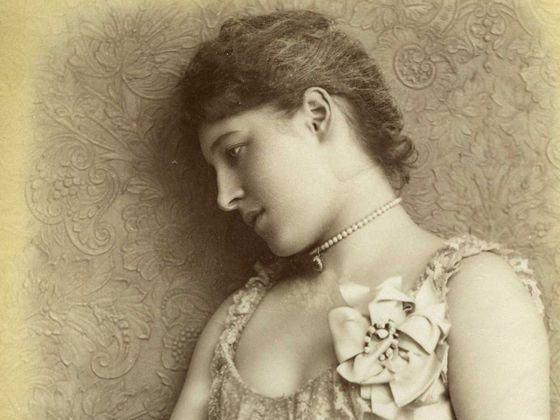Despite all the effort made today to de-stigmatize mental illness, the history of mental health and its treatment isn't pretty. Even as late as the 1970s, lobotomies were widely practiced in the United States to "cure" things such as depression, anxiety, and even homosexuality.
Now, imagine yourself in the late 1800s ... let's say around 1875. The germ theory of medicine had barely been worked out, let alone any sound understanding of the human mind and mental illness. People were still treated with bloodletting, mercury, and other dangerous practices. The definition of "insanity" was flexible, and often used to strip inconvenient family members of their money and land.
Protections against being committed to an insane asylum in the late 1800s were few ... and even fewer if you were a woman. With only the signature of a husband or a male guardian, women could be committed for the rest of their lives for "illnesses" that are now recognized as normal, healthy sexual behavior.
Sexual Activity, the Female Body and Mental Illness
According to a pamphlet published by the Weston Hospital Collection from the West Virginia Archives and History website, you could be sent to the asylum for one of several reasons, including:
- Amenorrhea
- Deranged masturbation
- Disappointed affection/love
- Female disease
- Fits and desertion of husband
- Imaginary female trouble
- Immoral life
- Masturbation for 30 years
- Medicine to prevent conception
- Novel reading
- Nymphomania
- Seduction and disappointment
- Suppression of menses
- Women trouble
While many on the list apply to both men and women, you can't help but notice how the mental health experts of those days pathologized women's sexuality, women's desire, and women's choice to leave their marriage.
There are some that are beyond ridiculous, like "novel reading" and "seduction and disappointment." You could be sent to an asylum if you liked reading books or if you had your heart broken by a lover. In this short list, there is apparently no space for women to feel emotions, to control their reproduction, or even to have the sex life they desire. (Now we know better. Women love sex! Read: The Proof Is In: Women Like Casual Sex Just as Much as Men.)
Femaleness and Madness
In fact, according to historians and researchers, there was a widespread conception that being a woman was being mad by default. Women were believed to be mentally weaker than men, and thus more susceptible to madness and insanity; and if, as a woman, you tried to improve yourself through education or political activity, you were even more likely to be seen as mad.
The idea that women should hide their feelings around men is not new; this is something that Victorian women did in order to appear sane and avoid being sent to the asylum. In fact, there is still some societal pressure against women to buckle down and avoid being seen as "hysterical."
"Hysteria" is, in itself, a fascinating look at the history of mental health as applied to women. The term comes from the Greek "husterikos," or "of the womb." It was liberally applied to all kinds of female behaviour that was considered inappropriate. For example, if a woman had an emotional outburst after a long period of repression, or if she developed depression or anger about her lot in life, she could be considered hysterical.
Another problematic term is "nymphomania" which appeared in the Victorian era as well. Nymphomania was applied to women who masturbated, had sexual affairs outside their marriages, experienced rape or assault, were flirtatious with men, or were just plain horny. One "sign" of nymphomania was a clitoris that was enlarged to the size of a man's penis, which also highlights how any kind of sexual behavior was considered a masculine behavior. Of course, women could not adopt masculine behavior in a society as rigidly structured as the Victorian era.
Refusal to marry (spinsterhood) and homosexuality were also considered mental illnesses. Women choosing roles and lives outside the norm of heterosexual marriage were a danger and the object of much moral panic during the late 1800s. Many women committed for spinsterhood and lesbianism were forcibly married by their family members and repeatedly abused and raped to "cure" them.
The Legacy of 19th Century Mental Health Beliefs
Although doctors and psychiatrists have rejected the 19th century theories of mental health as applied to women, many attitudes towards women that were pathologized in the late 1800s remain. The idea of female hysteria, or exaggerated and uncontrollable emotions, is still something that women who express their emotions have to fight.
More concerning is the idea that contact with men can cure women of lesbianism or disinterest in relationships with men. That is an attitude that remains today, and can be found in some forms of "conversion therapy."
Although mental health specialists would reject most of the Victorian-era illnesses that applied to women as ridiculous, many have remained stuck in our cultural consciousness. Fortunately, we do know better and female sexuality is increasingly being recognized and promoted as a healthy, enjoyable part of life. We also have laws to protect women from the abuses they were subject to in this era. (Read: Feminists Have More Fun: A Sex Manifesto .)
Anabelle is orignally from Montréal, Canada and is currently living in Victoria. She speaks and writes fluent French as well as English. She loves to write about a variety of topics, from home decor and social media to books and sex.
She currently doesn't have a pet, but she's working on that. In the meantime, she's learning to write stories and hopefully novels so that she will one day see her name in print. She tends to think her life is pretty boring, so she fills it with reading books about people whose lives are so much more interesting.
Anabelle is also an avid knitter and crocheter and loves to drink wine. Lots of it.




